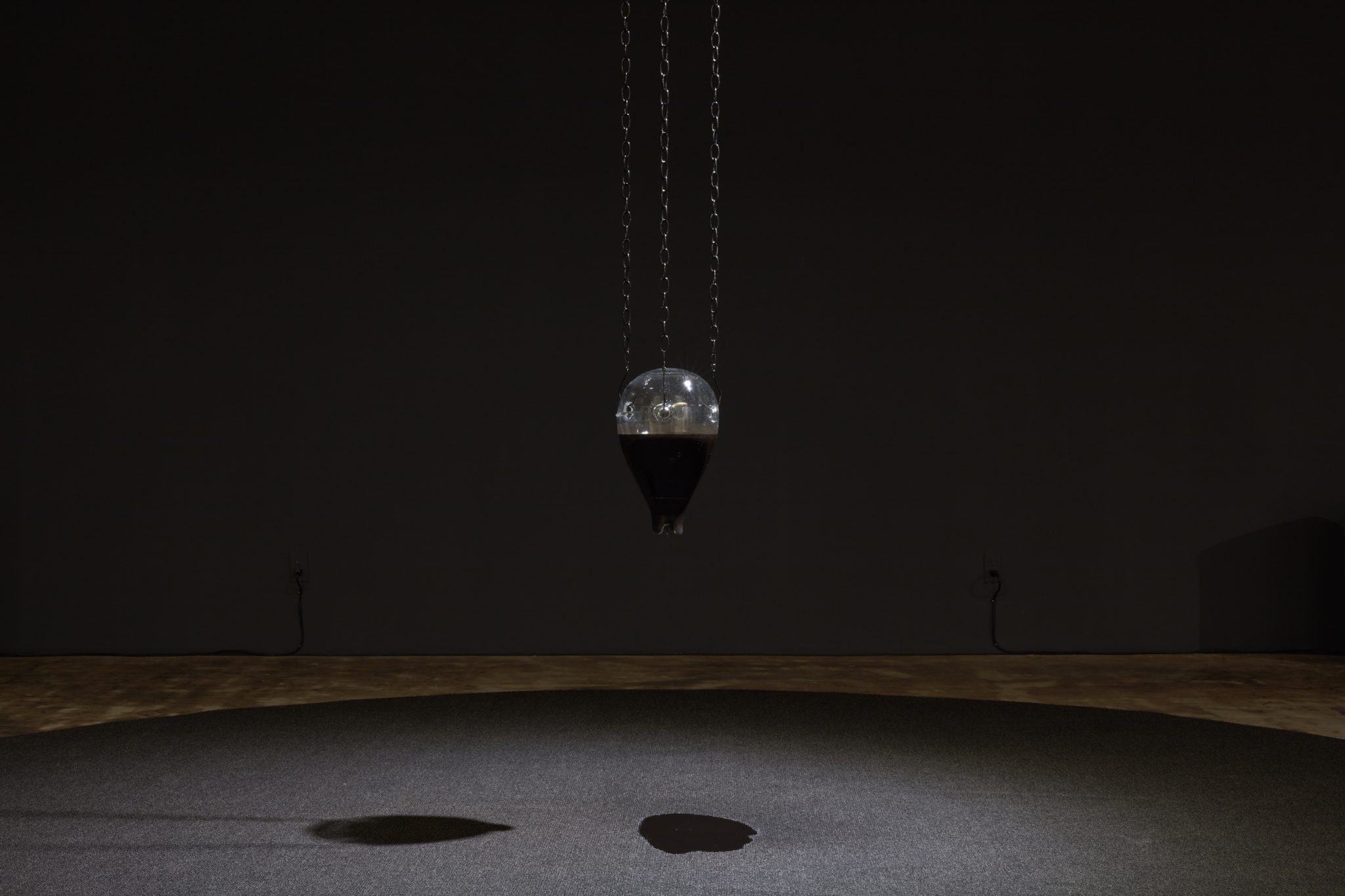If You’re Reading This, I’m Already Dead at Joan, Los Angeles is a wholly sensory environment that forefronts the differently abled or bodied experience
Where do crip theory, AI-generative technology and goth subculture converge? Johanna Hedva, whose work harnesses these disparate subjects, might reply: in their relevance to a subversion of the ‘normative’ body. The prolific multidisciplinary artist’s contributions to fiction, theory, music and visual art are all the more impressive because of the cluster of debilitating comorbid maladies with which they are afflicted. Hedva published ‘Sick Woman Theory’ in 2016 as a radical call for protest by the subjugated and oppressed – pointedly not contingent on a neurotypical or able body.
If You’re Reading This… showcases the Angeleno native’s abiding preoccupations – with agency of the differently abled or bodied foremost, but also death, astrology, the cosmos, S/M sex and AI as a tool for disembodied, perhaps even otherworldly artistic production. In a walkthrough, Joan’s curator Suzy Halajian explained that the show’s press release is itself a collaboration between her own initial draft and the literary AI program Hedva fed it through. The resulting text asserts things like, ‘Hedva is more sexually frustrated than we can imagine but they are dying so this just makes them a little bit more like us.’ This phantom wordsmith leaves the point where prompt ends and the ghost in the machine finds its own voice compellingly ambiguous.
The show is organised around a central sculptural work, The Clock Is Always Wrong (Other Mouth) (all works 2023), which comprises a circular grey carpet 4.5m in diameter, above which hangs a mouthblown clear glass orb filled with a sludge of black ink and soot, the viscosity of which is such that a spindly stream trickles continuously from a small opening at the orb’s base for the entirety of the exhibition. The piece has technical difficulties, with the goop clogging at random. It remains unclear how oozing colloid matter might inform our understanding of horology even if it works as planned. But if the vessel’s conceptual premise is thin, I can attest that, like a lava lamp, its unctuous discharge leaves visitors mesmerised.

Surrounding The Clock… are three large mixed-media wall works, titled (respectively) Bigger, Harder and Deeper, their supports – Neoprene, paper and silk – held up by black-handled knives driven through the materials and into the walls. The contents adhered to or scrawled on these supports, which include hair, a list of the submission poses in jujitsu, urethral sound wands, a cock cage and the artist’s blood, probe the corollary between pain and pleasure, and external and internal constraints therein. The trio are surrounded by multichannel sound-works that sample recordings from various cosmological events including a sonification of the vibrations of the sun and a field recording of an aurora borealis here on Earth.
Hedva’s aesthetic is unabashedly mired in the melodramatic and murky trappings of goth, but their curatorial approach is gratifyingly legible. In lieu of a checklist, the show is accompanied by an ‘accessibility handout’, which, in addition to listing the (extremely specific) materials in each piece, provides personal details and context that describes the objects’ relevance for the artist. As an art critic who has difficulty parsing visual information sans text, I hadn’t really considered the ableism implicit in the phrasing of a standard checklist – with its expectation that gallerygoers ought to be able to pick up the frequently meagre breadcrumbs of information listed in order to decode a given body of work. The outward-facing energy of this show is so emphatically ‘dark’, bordering on the farcical, that I initially wrote it off. But on a second visit, this time aided by the handout, I was better able to follow Hedva’s train of thought. The world Hedva signals towards is dense with sensory experiences, and one needn’t get too caught up in whether the vessels for their exchange aligns with our own tastes. One can, rather, experience this show by ambulating, by listening, by reading or simply by attending to the pulsating rhythm of the heart on Hedva’s sleeve.
If You’re Reading This, I’m Already Dead at Joan, Los Angeles, 11 November – 3 February
